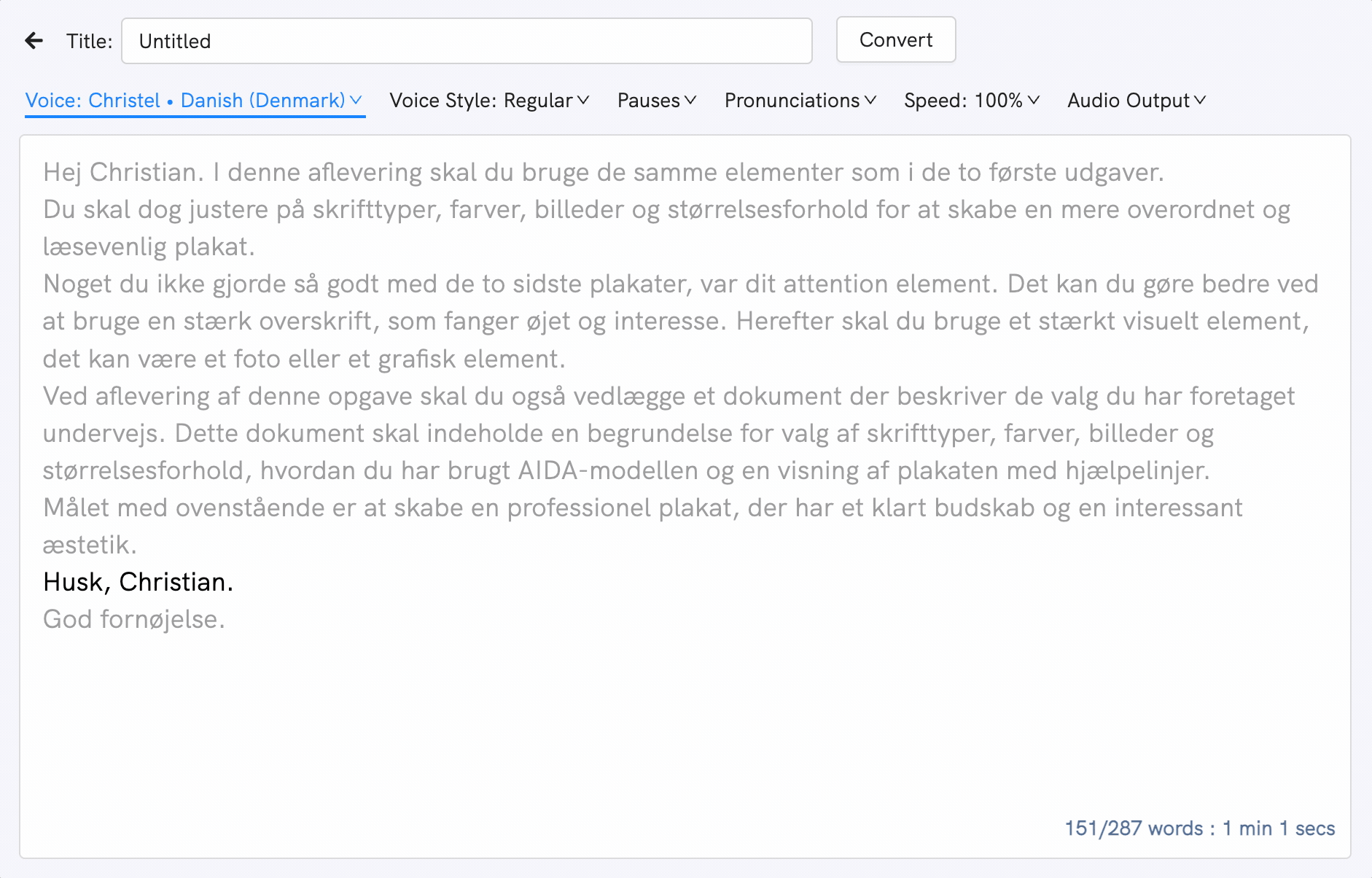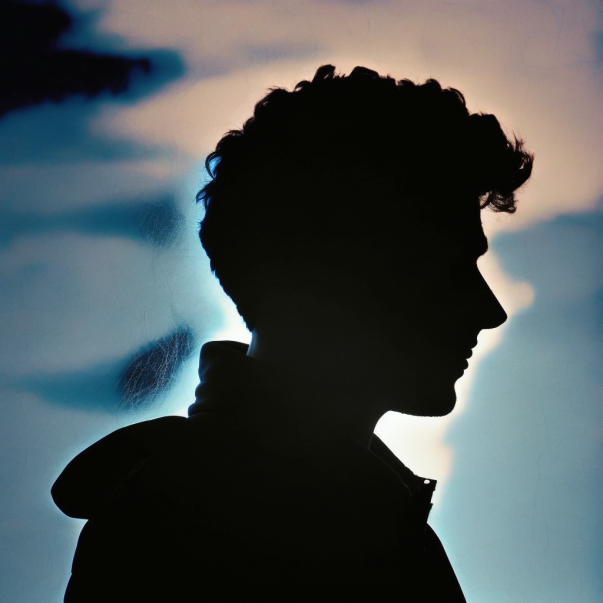When students are given an assignment, they typically need to read a lot of text. However, I experience that many students do not read this text and, therefore, do not understand the task. Often, they skim over the text or wait to ask other students what the task is about. One can argue that it's a competency they lack, but one can also turn it around and try to support students in their way of best understanding the content.
In this little experiment, I have tried using audio files generated by the computer that the students are given. By removing the focus from the text, I try to create a space where the content is paramount, personalized, and with minimal distraction.
The personalized part is particularly interesting, as I can create differentiated audio files for the students – down to the individual student. Previously, it required me to record it myself, and I had to do it many times for it to be the same result. For this course, I generated five audio files of two to four minutes, thus five different levels of the same assignment formulation.
I have used Listnr, which can convert text into realistic speech, for this project. The Danish pronunciation is still funny, but if you choose English, it's fluent.
Using Listnr also means that I can create many audio files, and I only need to make a few adjustments in my text to adapt it to a different type of student.
Challenges
However, there can be challenges in using AI to convert texts into sounds. In this case, it costs money to use the service, but there is also a need to focus on GDPR and where data is stored and processed.
Examples of task formulations for students

Below are three examples of assignment formulations.
Hej Christian.
I denne aflevering skal du bruge de samme elementer som i de to første udgaver.
Du skal dog justere på skrifttyper, farver, billeder og størrelsesforhold for at skabe en mere overordnet og læsevenlig plakat.
Noget du ikke gjorde så godt med de to sidste plakater, var dit attention element. Det kan du gøre bedre ved at bruge en stærk overskrift, som fanger øjet og interesse. Herefter skal du bruge et stærkt visuelt element, det kan være et foto eller et grafisk element.
Ved aflevering af denne opgave skal du også vedlægge et dokument der beskriver de valg du har foretaget undervejs. Dette dokument skal indeholde en begrundelse for valg af skrifttyper, farver, billeder og størrelsesforhold, hvordan du har brugt AIDA-modellen og en visning af plakaten med hjælpelinjer.
Målet med ovenstående er at skabe en professionel plakat, der har et klart budskab og en interessant æstetik.
Husk, Christian. Opgaven handler både om at lave en plakat, men også at kunne lave argumentation for de valg man har foretaget undervejs.
God fornøjelse.
The sound below is premium text-to-speech.

elow are a couple of examples of the same task (non-premium sound).


Future possibilities
A future perspective in this technology would be for students to request the assignment to be presented in the way they learn best. For example, a student could ask for the assignment as a video clip, read by a famous person, in a comic book style, as a guide, or even as a computer game. Each student will choose the style that best suits them and can change it.







